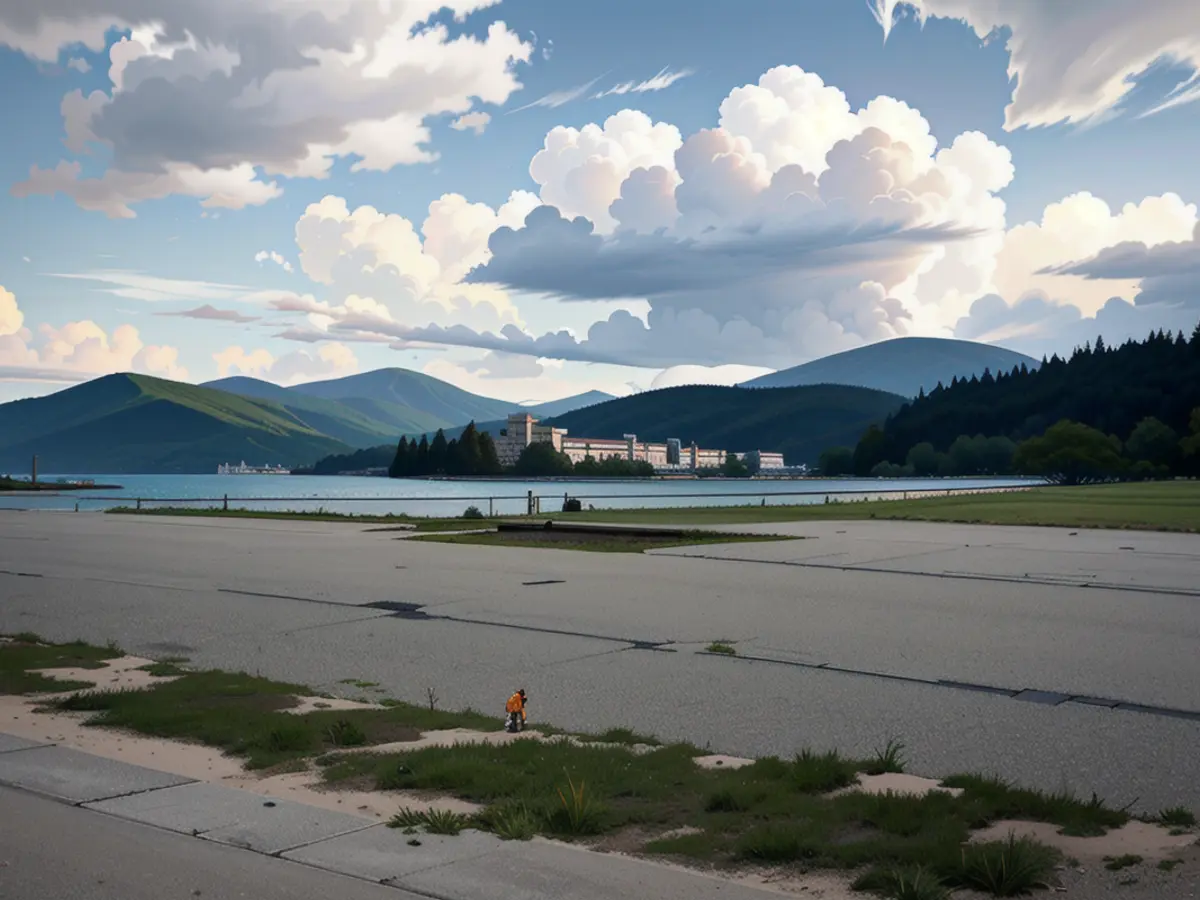Unpredictable weather and a mountain of snow turned heads and raised eyebrows over the past few days. Frustrated commuters and travelers awaited their trains, unable to quell their surprise as services at Munich station and numerous routes stumbled and faltered. While roads largely managed to stay clear, the railways struggled to regain their footing after the snowstorm. This situation leaves many questions begging for answers.
What factors contributed to the occasional rail service disruptions?
Deutsche Bahn (DB) sheds light on the extreme weather situation: a barrage of snow in an uncommonly short period followed by abnormally cold temperatures. A DB spokeswoman puts it into perspective, "Given the intense preparations, it's natural for both humans and machines to reach their limits in such extreme weather conditions. We witnessed similar issues in Munich's public transportation system and at the airport, for instance."
Christian Bernreiter, Bavaria's Transport Minister (CSU), echoes her sentiment, "The weather situation we endured in Munich over the weekend was not typical, but instead, the most snow Munich has seen in recorded history. This entire occurrence took place within a brief timeframe." However, he highlights the lasting impact of the situation on the railways, "Regardless, the duration has been far too long."
Some point to austerity measures as the primary culprit.
"Sadly, the impression is not far from the truth," says Bernreiter. He references the many cuts to heavy snow-clearing equipment and personnel as a contributing factor. Heino Seeger, ex-managing director of Bayerische Oberlandbahn and rail operations manager, shares a similar perspective, "Winter operations are labor-intensive and machine-dependent. Forgoing these tasks during inclement conditions is less expensive than tackling the snow and weather obstacles. There's a financial cost attached to reserves – be it personnel, machines, or tracks."
Markus Hecht, Head of the Rail Vehicles Department at the Technical University of Berlin, acknowledges "It was bound to happen." Another issue at hand is the lack of snow fences to contain snowdrifts along the tracks.
What must the railways prepare for in the future?
Detlev Neuß, Federal Chairman of the passenger association Pro Bahn, looks ahead to the future, stressing the need for climate change adjustments and increased investment. "We cannot guarantee less snow, but we can anticipate more extreme weather conditions, including heavy snowfalls. These conditions should not be regarded as isolated incidents. The railways need to be prepped for this, but it comes at a cost."
The topic of railroad reform, passed in 1993, arises as a source of concern. Experts believe that the intended focus on costs and revenue may have neglected winter conditions. Neuß acknowledges that progress has begun, but it might be moving at an insufficient pace.
Who was responsible for shutting down services completely in Bavaria?
DB points to DB Netz, which is in charge of the rail network, stating, "Later in the evening, we were bombarded with numerous reports about vegetation on the tracks, overhead lines, and other weather-related disruptions in a relatively short span of time. With heavy snowfall forecasted, we took precautionary suspension measures for safety reasons."
What's going on in Bavaria?
According to DB's announcement at the end of November, 13 of its snow-clearing vehicles are based in Bavaria, covering 9,800 kilometers of track in the southern region. seven light snow-clearing vehicles, four multifunctional maintenance vehicles for the rail infrastructure, and three track maintenance vehicles are also part of the team.
New developments in Bavaria's snow-clearing efforts were announced by DB on Tuesday, with more than 20 large machines now deployed in the affected region, including powerful snow blowers transferred from Hesse and Baden-Württemberg. Professionals are currently evaluating the possibility of mobilizing even more snow-clearing vehicles with assistance from other regions.
Why are things better in Switzerland and Austria?
Rail experts emphasize the far-reaching winter equipment for trains and better snow-clearing vehicles in both countries. "These are mountainous countries prepared for the harsh realities of winter. They have both the personnel and equipment for such scenarios," says Neuß. He adds understandingly, "Of course, it doesn’t mean everything can be restored immediately after heavy snowfall, but it shouldn't take days."
"The issue arises when snow removal is the responsibility of DB Netz - and DB Netz lacks additional resources, not even locomotives," adds Hecht. "The uncertainty lies in how snow removal is defined in the mandates of the Bavarian Railway Company, which falls under state responsibility on regional lines."
In the past, were things any better?
Heino Seeger shares past experiences from the Bayerische Oberlandbahn and Bayerische Regiobahn, emphasizing how they were proactive as a company. For instance, the tracks were kept clear overnight, and locomotives equipped with plowshares were run to maintain snow-free stretches, even at high personnel costs. "When snow fell as intensely as it does now, we weren't deterred. We found a way to move forward."
Will an investigation be conducted into the incident?
The Bavarian state government has called for a thorough examination, whilst Bernreiter has announced meetings with the railroad company to discuss future readiness. Bayerische Eisenbahngesellschaft BEG (responsible for ordering regional transport in Bavaria) expects all involved parties to critically review the winter problems and propose necessary improvements. DB has also announced that it will analyze the crisis management last weekend in detail for future improvements.
Reading Recommendations:
Relevant Enrichment Data:
To better cope with extreme weather conditions, particularly heavy snowfall, German railways can implement several measures to minimize service disruptions:
- Real-time weather data integration into public transport apps to enable automated route diversions and clear public warnings before extreme weather events.
- Standardized "first response" measures with automated protocols to close rail sections or divert traffic when predetermined weather thresholds are reached, ensuring consistency in emergency reactions.
- Infrastructure reinforcement through winterization of rail infrastructure and the regular inspection and maintenance of critical components, such as bridges and overhead lines.
- Implementing emergency alert systems to keep staff informed during severe weather and registering employees with disaster management agencies for timely notifications.
- Maximizing operational efficiency through dynamic line ratings, ensuring existing infrastructure is used to its fullest potential and eliminating the need for costly upgrades.
- Regular maintenance and inspection to clean tracks, inspect rail conditions, and ensure equipment is in good working order – including the maintenance of gutters and roofing to prevent ice dams and water damage.
- Employee training in emergency response skills, such as first aid and CPR, to respond rapidly to medical emergencies caused by cold exposure or accidents in hazardous weather conditions.
- Setting up backup power sources and establishing backup generators and battery-powered emergency lighting to ensure vital operations continue during power outages.








